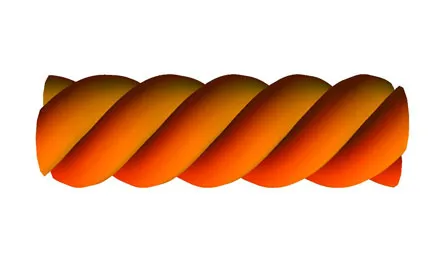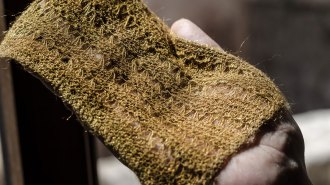Physicists untangle the geometry of rope
Twine, string, cord or cable, it all winds up the same way
- More than 2 years ago
Researchers have unraveled the mathematics that keeps ropes from unwinding.

The trick lies in the number of times each strand in a rope is twisted, say Jakob Bohr and Kasper Olsen, physicists at the Technical University of Denmark in Lyngby. Their paper was posted online April 6 at arXiv.org.
In a traditional rope, each individual strand is twisted as much as possible in one direction. The twisted strands are then wound together in a spiral shape called a helix, which itself rotates in the opposite direction. The interlocking of these twists and countertwists gives the rope strength so that when yanked, it does not unwind.
By plotting a rope’s length against the number of twistings in each strand, Bohr and Olsen discovered that there is a maximum number of times each strand can be twisted — resulting in what they call the “zero-twist point” for the overall rope. A good rope is always in the zero-twist configuration.
A triple-stranded rope in the zero-twist configuration, they found, is 68 percent the length of its untwisted component strands.
That figure stays the same no matter what the rope is made of, says Bohr. “If you have an old Egyptian rope or one made by modern petrochemical industries, they all look the same,” he says. “It is beyond material — it is geometry.”
Physicist Henrik Flyvbjerg of the Technical University of Denmark, who was not on the research team but is familiar with the work, agrees: The rule of the zero-twist point is universal.
“If there is life on other planets in other solar systems, their rope makers must follow the same rules,” Flyvbjerg says.
The work also explains why rope makers need to feed in the strands at angles higher than that of the final zero-twist structure, Bohr says; the tensile stress in the rope will automatically adjust the newly added portion to the zero-twist configuration. For example, medieval rope-making tools used a grooved wooden cone to feed strands in this way.
Because rope manufacturers have perfected their art over time, the new study is unlikely to result in any new and better ways to make rope, Bohr says. But the research does illuminate the physical principles underlying how and why rope can be made functional.
“The rules of the ancient craft of laying ropes find today a scientific explanation,” declares Piotr Pieranski, a physicist at the Poznan University of Technology in Poland who was not involved in the work.
Bohr and Olsen came to the question of rope winding via their research on the behavior of DNA, a rope-like molecule. In earlier work, they showed that DNA doesn’t try to unwind when stretched; it does the opposite, “overwinding” itself by rotating even further in the same direction as its helical winding. And that got them thinking about how rope holds itself together.







